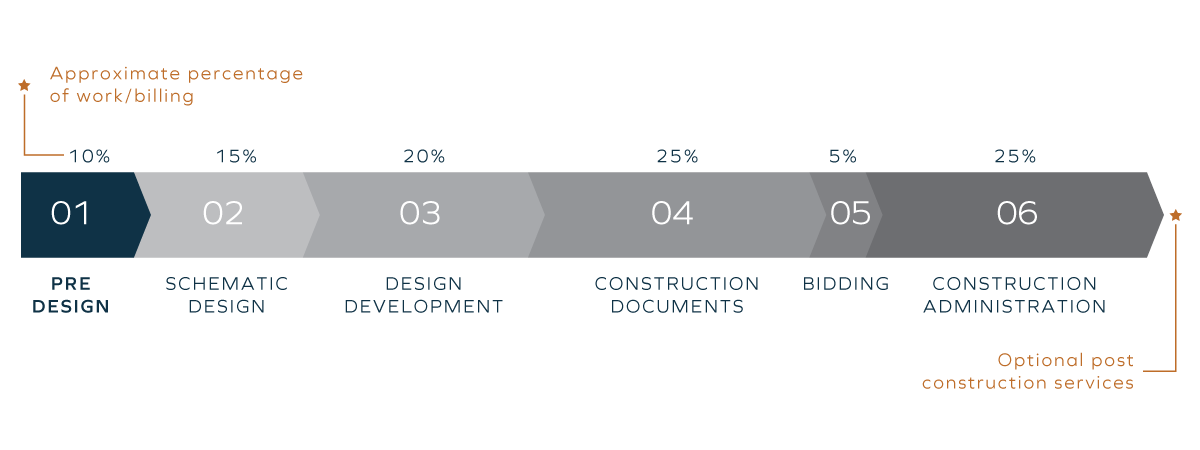Preliminary Design Process

If you are a home or business owner looking to renovate or build a new space, it can be confusing on where to start. But no worries - it's our job to help get the ball rolling and remember all the different things that need to happen for your project to run smoothly. If you missed our Phases of Design Overview Blog, here's the link to get you reading through that piece.
Pre-Contract
As we navigate that first meeting and project scope conversation - we call that the "pre-contract" stage. If you are on board with the proposal, or if you want to make a few changes, whether to requirements, timeline or budget, those can be adjusted before moving towards signing a contract with ID8 Architecture. The contract is a great tool to keep everyone held accountable as the project begins, as it states what is expected from each party, including the design team and contractors, and what will all be completed during the project. We make this as transparent and detailed as possible, so there are no gray areas for you as a client. If the contract details look good, it is signed, and the fun begins!
Phase 1: Pre-Design
During the Pre-Design phase, we review your ideas and input and generate a proposal that we present to you, which explains the scope and terms for your project, including: 1. What services we will be providing, 2: The areas/spaces you asked for your project to include, 3. A projected schedule, and 4. The estimated fees for the project. All of this gives you an idea of what we can accomplish within your timeframe and budget.
Preliminary Design Process
Think of this as the background investigation that occurs before we can start on the design. The design team will hit the ground running, beginning by surveying the site. This means we will look at the land, to better understand the topography and any slopes it might have, and what measures will be taken to ensure the structure will be safe and secure, or we will look at the existing building to make sure it is structurally sound, what requirements are needed to potentially bring it up to code, and begin to take measurements. We will also begin to get more specific wants and needs from you, looking at each space and breaking it down to include equipment, furniture, design features, acoustics, adjacencies, technology, or other specific needs you may have for each space.
Activities in Pre-Design
- Assess project feasibility
- Owner needs assessments
- Site analysis (boundary, utility, topography survey, geotechnical report using soil borings)
- Environmental assessments (which vary based on new construction vs. remodel, but might include FEMA assessments, floodplain, verification, drainage assessments, testing for lead, asbestos, mold, etc.)
- Permitting requirements (look at code and zoning requirements, do an ordinance review, contact permitting authorities
- Walk the owners through budgeting and options for product delivery
- Discuss and draft a tentative design/construction schedule
Each of these big categories for investigation contains dozens of smaller tasks, and all are important to ensure your design and construction team have as much relevant information as possible. Thorough planning and preparation is key to a smooth-running project, and trying to skip this step means your team is trying to design around information they don't have, which is risky and can lead to costly errors or omissions in the in the process, and inevitable change orders (or increase in costs due to modifications during construction.)
